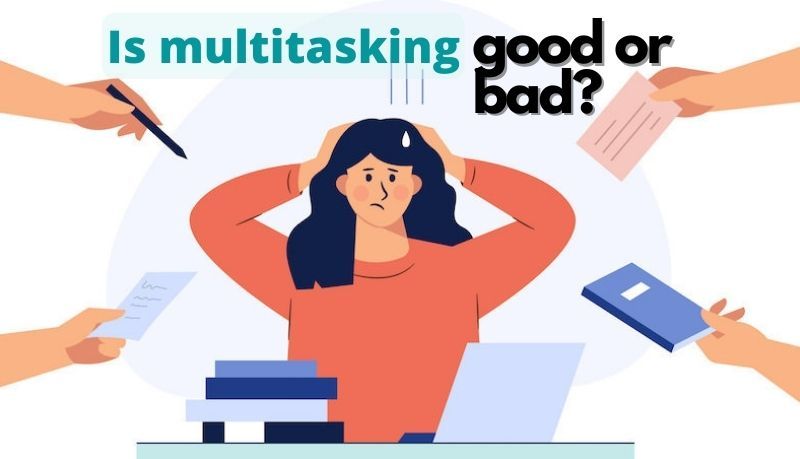How to take meeting notes? Everyone will tell you different ways to do it.
Taking meeting notes is challenging—so much information to process and capture simultaneously. Mostly, we madly scribble down every word trying to jot down every detail, only to end up with a jumbled mess of notes that make no sense later.
Sounds relatable? Read on as we explore more about how to take meeting notes and discuss:
- What are meeting notes
- How to take notes in a meeting
- Templates you can use for taking good meeting notes and more!

What are meeting notes?
In his research on the forgetting curve, Professor Art Kohn found that people will forget an average of 50% of the information presented to them within an hour.
So, without meeting notes, you will likely forget half the things.
Meeting notes are informal records of discussions, decisions, and actions taken during a meeting. You can later refer back to these notes to recollect this information.
Unlike meeting minutes, meeting notes need not follow any typical structure, are for personal use, and are created by each individual in their style.

How to take meeting notes?
Though it doesn’t demand you to follow any strict template or format, there’s some etiquette you should consider while taking meeting notes, so it makes sense even 100 days after the meeting.

How to take effective meeting notes (a step-by-step guide)
Step 1: Set up your note-taking system
The first step is to set up your note-taking system. You can use a simple notepad, note-taking software, or a Google Doc, whichever works best for you.
Ensure you have everything you need, such as pens, pencils, highlighters, or a charged laptop or tablet.

Step 2: Choose a note-taking method that fits the meeting type and your role best.
Here are four common note-taking you can follow:
- Cornell Method
- Outline Method
- Mind Mapping Method
- Charting Method
1. Cornell Method
The Cornell note-taking method is a structured system developed by Walter Pauk, an education professor at Cornell University.
It involves dividing a sheet of paper or document into three sections: main points, the note-taking column, and the summary section.
The Cornell Method is an effective way to take organized, comprehensive notes, and it has the added benefit of facilitating review and retention of the material. The cue column allows for quick review and self-testing, while the summary section helps you review the main points and refresh your memory.
2. Outline Method
This method uses a hierarchical structure to organize your notes, with main topics at the top and subtopics/key points listed below.
3. Mind Mapping Method
The Mind Mapping Method of note-taking is a visual technique for organizing information in a non-linear way. It involves creating a diagram or map that connects ideas and concepts using branches and sub-branches, often starting from a central idea or topic.
This method will fit perfectly if the meeting aims to brainstorm ideas or discuss complex topics.
4. Charting Method
This method involves creating a table with columns and rows to organize information.
This method is best when comparing and contrasting different ideas or concepts.
Step 3: Write the meeting details
The next step is to write the meeting details. Include the date, time, and location of the meeting, as well as the names of attendees, the meeting's objective, and the agenda on top of the document.
Step 4: Listen and take notes
Actively listen to the discussion and take notes during the meeting. Write down
- key points,
- action items,
- decisions,
- questions, and
- other important information.
Use bullet points, shorthands, and symbols to make concise notes and keep up with the meeting pace.
Write any action items that are assigned or agreed upon. Write down who is responsible for each task, the deadline, and other relevant details.
Step 5: Review the notes
After the meeting, review your notes and make any necessary corrections or additions while the session is still fresh in your mind. If necessary, share your notes with other attendees and confirm that everyone clearly understands what was discussed and agreed upon.
Step 7: Organize your notes
Organize your meeting notes according to the agenda or topics and save them, making it easier for future reference.
Manually taking meeting notes is a lot of work that demands undivided attention and multitasking. And most people aren't good at it. Studies show only an estimated 2% of the population is proficient at multitasking. When you listen and write, you may misunderstand important details or, worse still, miss them altogether.

💡 Fireflies Tip
Let Fireflies help! Fireflies is an AI notetaker that automatically records, transcribes, summarizes, and analyzes online meetings or audio/video files, so you do what’s required—focus on the discussion and actively participate in the meeting.
Example of how to take meeting notes (templates)
When manually taking meeting notes, following a template can ease your efforts and result in outstanding outputs.
So, here are a few templates and examples based on the four note-taking methods mentioned above.
1. How to take meeting notes using the Cornell Method of note-taking
Here’s how to take notes in a meeting using this method:
1. Draw a vertical line about 2.5 inches from the left-hand side of your paper/document, creating a "main ideas/cue column."
2. Take notes in a linear, bullet-point format on the right-hand side of the page.
3. After the lecture or presentation, summarize the main points and concepts in the summary section at the bottom of the page.
4. Review your notes and add questions or keywords in the cue column to help you quickly identify and review the main ideas.
The template for taking meeting notes using this method:
Example:
2. How to take meeting notes using the Outline Method of note-taking
Follow these steps to take good meeting notes using the Outline Method:
1. Write the main topic or idea at the top of the page, centered and underlined.
2. Indent to the right and write subtopics or supporting ideas underneath the main topic, using a bullet point or numbering system.
3. Indent further to the right and write additional details or examples of each subtopic, if needed.
4. Repeat the process for each new main topic or subtopic.
Use this method for both handwritten and digital note-taking. It's easy to revise and reorganize the information as needed.
Here's the template:
Example:
3. How to take meeting notes using the Mind Mapping Method of note-taking
The Mind Mapping Method is simple, crisp, and engaging.
When following this method, keep the main objective of the meeting at the center of attention and map the other agenda items to it. You can attach all the key points discussed against these items in separate boxes.
Also, add colors to make it more interesting and easily digestible.
Here’s how to take notes in a meeting using the Mind-Mapping Method:
1. Start with a central idea or topic, and write it in the center of the page.
2. Draw branches out from the central idea, and write related sub-topics on the branches.
3. Draw further branches from the subtopics, and write additional details, examples, or sub-ideas.
4. Use color, symbols, and images to make your Mind Map more engaging and easier to remember.
Example:
4. How to take meeting notes using the Charting Method of note-taking
Follow these steps to take meeting notes using the Charting Method:
1. Create a table with columns and rows based on the type of information you want to record.
2. Label each column and row with headings corresponding to the information you want to capture.
3. Fill in the table with information, ensuring each entry is relevant to the appropriate heading.
4. Use color or symbols to highlight key information and make it stand out.
The template for making meeting notes using the Charting Method:
Meeting Title/Topic:
Date:
Attendees:
Example:
Meeting Title/Topic: Marketing strategy for the new product line XYZ launch
Date: March 10, 2023
Attendees: John, Sarah, Lisa, Sam
Remember, meeting notes are primarily intended for your personal use. So, select and follow the template that works best for you.

Bonus: 3 tips on taking good meeting notes
Well, that isn’t all. We also have three exclusive tips to help you take good meeting notes like a pro!
Here are those:
- Go prepared
- Use shorthands
- Be selective
1. Go prepared
Finalize the format or template for taking the meeting notes beforehand, and based on that, prepare the document in advance. Ensure you’ve added the meeting title, date, time, venue, attendees, and agenda.
Also, carry an additional pen and a notepad, even if you’re taking meeting notes on a laptop. It will come in handy if your laptop runs out of charge or any other technical issues arise.
2. Use shorthand
Shorthands help you write faster, keep up with the pace of the meeting, and capture more information in less time.
So, follow shorthand that is easy for you to read and understand. You can use symbols, abbreviations, etc., for it. For example, instead of “development process,” write “dev. Process”.
3. Be selective
Don’t write everything that was said in the meeting. Focus only on the most important information. This might include key decisions, action items, and other information relevant to the meeting's purpose.
This selective information-gathering approach will make staying focused easier and make your notes more useful later on.
Try Fireflies for free!
Final thoughts
So there you have it: the ultimate guide on how to take meeting notes like a pro—the different note-taking methods with templates and examples, some tips to ace the process, and more.
Remember, taking good meeting notes is not just about writing everything down; it's about distilling important information and making it easily accessible for future reference.
So next time you're in a meeting, put these note-taking tips to the test. You might just be surprised at how much of a difference it can make!







